In 1907 the CUNARD STEAMSHIP Company launched,
MAURY and LUCY, after the shocking appearance of the German Greyhounds in 1897 - KAISER WILHELM
DER GROSSE, the first of their Express Liners, the LUSITANIA
and MAURETANIA,
ships that become bywords for speed, luxury and elegance in
transatlantic travel in the Anglo-Saxon world. Conquering the, thought to be
British owned, BLUE RIBAND did send shockwaves through the Empire.
by Earl of Cruise
by Earl of Cruise
MAURETANIA - Source: Michigan Cottage Cook
In 1897 Great Britain was in its 1st
year of recovering from the original Gerat or Long Depression starting after the Vienna Stock Exchange crash in 1873. During that period UK forced f.e. Germany to label its products
with `Made in Germany´, to prevent German products in the world markets. Unfortunately
it turned out the other way round. As in these two decades the UK industry lost
its leading position in the world.
MAURETANIA longitudinal cut - Source: JF Ptak Science Books
The new turbine steamers were CUANRD´s
first of the "Grand Hotels" at sea. Near sister ships, each as long as the Capitol Building and Houses of
Parliament, that came equipped with palm courts, orchestras, a la carte
restaurants, electric lifts, telephones, and daily newspapers printed at sea. Items
introduced by the German express steamers of NORDDEUTSCHER LLOYD and
HAMBURG AMERIKA LINIE. These liners
f.e. implemente the first fitness rooms at sea ... as of the extra ordinary
oppulent cuisine the fierce competitors LLOYD and HAPAG offered, with their
other rival COMPAGNIE GÉNÉRALE TRANSATLANTIQUE. Rivals that CUNARD
and the other British lines did not consider as real rivals or a threat ...
LUSITANIA - courtsey coloured by Daryl LeBlanc
Shortsighted for decades and more to
come, British lines did rely on the vast Empire and their equal language with
the United States which gave them the impression to be superior.
LUSITANIA and MAURETANIA,
were not only the first big British liners to be powered by
four revolutionary Parsons steam turbine engines, but on Transatlantic at all, and each had a top speed of over 25
knots. Unmatchable by the last of the LLOYD greyhounds - KRONPRINCESSIN CECILIE, with the biggest ever in a ship constructed reciprocating steam
engine. KRONPRINZESSIN CECILIE should have become the fourth LLOYD Riband
winner. The once so forward looking LLOYD was a second time sticking to old
technology, as it had been happening with the 11 ships of the FLÜSSE Class. Not even
considering the new technology for the fourth LLOYD greyhound, they constructed
the vessel with the old and now outdated steam engine technology. Despite being technical
outdated the last LLOYD fourstaker was considered a real greyhound, and offerd
unparalelled luxuries. Even if the vessel was quite half the size of the
Admirality financed CUNARD thoroughbreds. It did not affect the popularity. And
really slow they had not been with 22 to 24 kts.
KRONPRINZESSIN CECILIE the last of the LLOYD express steamers, with 18,373 GT nearly half the size of MAURETANIA and LUSITANIA - own collection
KRONPRINZESSIN CECILIE was the last of the KAISER Class express steamers. KAISER WILHELM DER GROSSE emerged four years after CAMPANIA / LUCANIA ... and if he would have had only two funnels these had to be too massive in diameter.
KRONPRINZESSIN CECILIE was the last of the KAISER Class express steamers. KAISER WILHELM DER GROSSE emerged four years after CAMPANIA / LUCANIA ... and if he would have had only two funnels these had to be too massive in diameter.
Unsurprisingly,
LUSITANIA and
MAURETANIA went on to hold the BLUE RIBAND for fastest Atlantic crossing,
and the MAURETANIA
held the record for fastest eastbound crossing for nearly 20 years,
between 1909 and 1929. A fact that is also for the slow recovering of
Transatlantic Tavel after WWI, and the really slow recovering of the world
economy. In the mid 1920s the world economy recovered not only, but mainly, out
of the "money carousel" from German reparations, financed by US loans
to Germany. With the paid reparations to the Allies, these victorious Allies of WWI were able paying their depts to the USA.
Though always reknowned for their
safety, CUNARD ships did not always have a reputation for
carrying passengers in speed and comfort ... and good or fantastic food.
ETRURIA (1884) - Source: The New York Public Library Digital Collections
The New York Public Library, as many
collectors, have selections of menu cards from CUNARD ships,
including the ETRURIA (1884), CAMPANIA (1893),
LUCANIA
(1893) and MAURETANIA
(1907). Taken from the Library's extensive MenuCollection.
CAMPANIA (1893) (original size) and sisitership LUCANIA - above and below, sourece: Wikipedia
One menu, dated Tuesday, November 26th,
1907, is for a luncheon served in the First Class Dining Saloon of the MAURETANIA.
According to The
New York Times the diners were not passengers, but 300 guests
of the CUNARD LINE invited to inspect the "new quadruple turbine liner at
her pier". Built in Wallsend, Tyne and Wear in the North-East of England, by the SWAN, HUNTER and WIGHAMRICHARDSON Company, work on the MAURETANIA began
in 1903, after negotiations with the British government and Admirality. The
ship was launched by the Dowager Duchess of Roxburghe, September
20th, 1906, and fitting out completed by 1907. MAURY, as the ship came to be
known, weighed 32,000 tons, was 240,79 meter / 790 feet long by 26,82 meter /
88 feet wide, with room for 2,165 passengers and 800 crew. When
launched she was "the largest moving structure ever built".
Even bigger than war ships of that time. And a warship she resembled in her
hulll design - these lines are more those of a destroyer, than a
"normal" liner. During speed trials security surrounding news
of MAURETANIA's performance
was so tight that carrier
pigeons were used to maintain confidentiality. MAURETANIA and LUSITANIA had
sockets for guns installed during construction, that would made her in wartime
an easy to rebuild auxilliary cruiser.
MAURETANIA in war dazzle camouflage, on the forepeak visable the mounted guns - own collection
Twenty eight different woods were used
to decorate the ship. Furnishings and tapestries were hand made to the
height of Edwardian taste. Harold A. Peto, an architect
famous for country house interior design work and gardens in Britain was hired to oversee decoration.
Scientific American described the Dining Saloon as arranged on two levels and decorated in a style known as Francois Premier, with richly carved woodwork and panelling, a "loftily groined dome the crown of which terminates in a gilded convex disk, round which runs a balustrade sheltering hidden electric lights." Beneath the enormous glass dome, chairs and tables were arranged to give diners a good view of their fellow passengers.
After their meal, diners could smoke a cigar in the plush, Walnut pannelled First-Class Smoking Room, or relax in the First-Class Lounge. They could order coffee in the covered Verandah Café, or take a stroll around the the ship's observation deck, situated under the Pilot House and the first to offer protection from the elements.
Scientific American described the Dining Saloon as arranged on two levels and decorated in a style known as Francois Premier, with richly carved woodwork and panelling, a "loftily groined dome the crown of which terminates in a gilded convex disk, round which runs a balustrade sheltering hidden electric lights." Beneath the enormous glass dome, chairs and tables were arranged to give diners a good view of their fellow passengers.
After their meal, diners could smoke a cigar in the plush, Walnut pannelled First-Class Smoking Room, or relax in the First-Class Lounge. They could order coffee in the covered Verandah Café, or take a stroll around the the ship's observation deck, situated under the Pilot House and the first to offer protection from the elements.
KRONPRINZ WILHELM, on the Sonnendeck (Sun Deck) at the aft is the Verandah Café and on the same deck Single Cabins! The two CUNARD greyhounds had not been the first to offer! - own collection
Such a Verandah Café had been installed
first on the Atlantic in KRONPRINZ WILHELM in 1901. Since then it became a fixed installation on any major liner in
Germany as it proved to be well like place to stay sheltered but in the open at
sea.
The MAURETANIA made her maiden voyage from Liverpool to New York, November 16th, 1907, and was waved off by a crowd of over 50,000 well wishers. The ship was widely anticipated to break the westbound tranatlantic crossing record set by the LUSITANIA two weeks before and capture what was informally known as the BLUE RIBAND. Unfortunately rough weather meant that this did not happen - although the title would be captured two years later - but despite this there was still great interest surrounding the ship's arrival in New York. British and American newspapers covered not only the story of the MAURETANIA's maiden voyage, but also her commissioning, construction, launch, and speed trials.
With the arrival of the LUSITANIA - or LUCY - and the MAURETANIA, CUNARD not only reclaimed the BLUE RIBAND, but also cornered the market in luxury and opulence in a way that CUNARD had hitherto failed to do.
The MAURETANIA made her maiden voyage from Liverpool to New York, November 16th, 1907, and was waved off by a crowd of over 50,000 well wishers. The ship was widely anticipated to break the westbound tranatlantic crossing record set by the LUSITANIA two weeks before and capture what was informally known as the BLUE RIBAND. Unfortunately rough weather meant that this did not happen - although the title would be captured two years later - but despite this there was still great interest surrounding the ship's arrival in New York. British and American newspapers covered not only the story of the MAURETANIA's maiden voyage, but also her commissioning, construction, launch, and speed trials.
With the arrival of the LUSITANIA - or LUCY - and the MAURETANIA, CUNARD not only reclaimed the BLUE RIBAND, but also cornered the market in luxury and opulence in a way that CUNARD had hitherto failed to do.
ps ROYAL WILLIAM - Source: Wikipedia
CUNARD began life in 1839, as
the BRITISH and NORTH AMERICAN ROYAL MAIL STEAM PACKET Company, created
ostensibly to win a contract to ship the Royal Mail from Great Britain to Canada and the United States.
The business came to be known as the CUNARD Company,
after founder Samuel Cunard, a Nova Scotian
shipping entrepreneur. Inspired by the revolutionary work of Isambard Kingdom Brunel and
his then "mammoth" steam ship the GREAT WESTERN, Cunard, who had
been engaged as a steam ship owner previously - he was one of the owners of the
Canafian built and financed paddle steamer ROYAL WILLIAM. Cunard and
his new business partners George Burns and David McIver, envisioned a regular
steamship link between the mainland Great Britain and its colony Canada in
North America and the USA for transporting mail. A network of Transtlantic
shipping lanes along the lines of, and completing links between, railways
and roads in Europe and America was behind the GREAT WESTERN STEAMSHIP Company. Cunard,
as one of visionairy entrepreneurs and investors, realised that ships
powered by steam would not depend upon the wind to get them from A to B, and so
could operate on a schedule with the same punctuality as the railroads. Learning
from his experiences with the ROYAL WILLIAM, Cunard knew there must be subsidiaries
for the mail transport, making a steamship line profitable.
Despite the British military domince at sea and its vast colonial empire, there was no British owned ship owner who was able transporting her Majesty´s Mail to North America. The Admirality responsible for the transport of the Royal Mail had to sign contracts with US sailing packet lines, such as BLACK BALL LINE from Boston and New York.
CUNARD commissioned the construction of five transatlantic steamers, under the supervision of the British Admirality, the first of which was the BRITANNIA. In his book The CUNARD Story, historian Howard Johnson describes the BRITANNIA as an inelegant paddle steamer, a "two-decker with one tall orange-red funnel amidships." Launched in 1840, the 207-foot long, 1,145 ton CUNARDer made her first voyage July 4th that year, sailing from Liverpool bound for Halifax, Nova Scotia and Boston. On board were 63 passengers - including CUNARD and the Bishop of Nova Scotia and his family, 93 crew, Her Majesty's Mail, and one cow: the latter to supply fresh milk, and producing waste and stench. The ship was commanded by former British Navy Captain Woodruff, R.N., who barked orders at his crew through a speaking trumpet, and treated his passengers as "screaming chargo". When the sea was rough it took as many as four sailors to man the ship's wheel, as it was for the sailing vessels practiced too. During storms the passengers had been locked away in their cabins. BRITANNIA steamer completed her journey in 12 days and 12 hours, and would go on to hold the record for the fastest eastbound Atlantic crossing. The same journey by sail could take as much as 35 days and eventually more.
Despite the British military domince at sea and its vast colonial empire, there was no British owned ship owner who was able transporting her Majesty´s Mail to North America. The Admirality responsible for the transport of the Royal Mail had to sign contracts with US sailing packet lines, such as BLACK BALL LINE from Boston and New York.
CUNARD commissioned the construction of five transatlantic steamers, under the supervision of the British Admirality, the first of which was the BRITANNIA. In his book The CUNARD Story, historian Howard Johnson describes the BRITANNIA as an inelegant paddle steamer, a "two-decker with one tall orange-red funnel amidships." Launched in 1840, the 207-foot long, 1,145 ton CUNARDer made her first voyage July 4th that year, sailing from Liverpool bound for Halifax, Nova Scotia and Boston. On board were 63 passengers - including CUNARD and the Bishop of Nova Scotia and his family, 93 crew, Her Majesty's Mail, and one cow: the latter to supply fresh milk, and producing waste and stench. The ship was commanded by former British Navy Captain Woodruff, R.N., who barked orders at his crew through a speaking trumpet, and treated his passengers as "screaming chargo". When the sea was rough it took as many as four sailors to man the ship's wheel, as it was for the sailing vessels practiced too. During storms the passengers had been locked away in their cabins. BRITANNIA steamer completed her journey in 12 days and 12 hours, and would go on to hold the record for the fastest eastbound Atlantic crossing. The same journey by sail could take as much as 35 days and eventually more.
ps rms BRITANNIA in full sail. Sails were seldom used as a
method of propulsion, but rather to help stabilize the ship in rough
weather. The Royal Navy preferred sail to steam until 1869, and transatlantic steam
ships kept their sails until the 1880s, as the technology of steam still had
its flaws and the then single screwed liners could get serious shaft problems,
the last CUNARD ship to have sails was the Etruria, launched in 1884.
ps BALTIC of COLLINS LINE - Source: Wikipedia
In 1842 Charles Dickens and his wife Catherine were passengers aboard the BRITANNIA. According to the ship's passenger list,
they set sail from Liverpool bound for Boston, where the 30 year
old author was to begin his first tour of the United States. Dickens wrote about the 18 day voyage in
some detail, in the second chapter of American Notes.
Seemingly something of a gourmet, he included a description of the food served on
ship.
"At one, a bell rings, and the stewardess comes down with a steaming dish of baked potatoes, and another of roasted apples; and plates of pig’s face, cold ham, salt beef; or perhaps a smoking mess of rare hot collops (slices of meat). At five, another bell rings, and the stewardess reappears with another dish of potatoes - boiled this time - and store of hot meat of various kinds […] We […] prolong the meal with a rather mouldy desert of apples, grapes, and oranges; and drink our wine and brandy-and-water. The bottles and glasses are still upon the table, and oranges and so forth are rolling about, according to their fancy and the ship's way [...] (26-27).Conditions aboard early CUNARD ships were spartan. The cabins were typically eight by six feet, with two bunks, a hard settee, a commode with two wash basins, two water jugs and two chamber pots. Dicken’s described the saloon, where passenger’s dined, as resembling “a gigantic hearse with […] a melancholy stove, at which three or four chilly stewards warmed their hands.” (24)
An unnamed passenger travelling from Boston to Liverpool in 1840, wrote to his father that the food was “carried over open decks [and] sometimes cold, […] fresh food for the first three days and thereafter the fish and meat is salted. BRITANNIA has two ice rooms and the fruit is stored there […] During the journey I counted pea soup nine times and the ubiquitous Sea Pie was on the menu everyday.”
Rules on board ship ordered that "state-rooms (cabins) be swept, and carpets taken out and shaken every morning after breakfast. To be washed once a week if the weather is dry. That bedding be turned over as soon as passengers quit their cabins. That slops be emptied and basins cleaned at the same time. Passengers are requested not to open their scuttles (portholes) when there is a chance of their bedding being wetted. The Wine and Spirits Bar will be opened to passengers at 6 a.m., and closed at 11 p.m."
What early CUNARD ships lacked in luxury, or even comfort, they made up for by being safe and reliable. CUNARD steamers were well-built with their wodden hulls, with experienced and reputable captains and crew, which mostly originated from the Royal Navy, initially hand picked by David McIver, himself a former ship's captain.
Only during the days, when COLLINS LINE criss crossed the pond, CUNARD improved with its servce and food quality. When COLLINS was history, the old CUNARD "service" re-emerged ...
"At one, a bell rings, and the stewardess comes down with a steaming dish of baked potatoes, and another of roasted apples; and plates of pig’s face, cold ham, salt beef; or perhaps a smoking mess of rare hot collops (slices of meat). At five, another bell rings, and the stewardess reappears with another dish of potatoes - boiled this time - and store of hot meat of various kinds […] We […] prolong the meal with a rather mouldy desert of apples, grapes, and oranges; and drink our wine and brandy-and-water. The bottles and glasses are still upon the table, and oranges and so forth are rolling about, according to their fancy and the ship's way [...] (26-27).Conditions aboard early CUNARD ships were spartan. The cabins were typically eight by six feet, with two bunks, a hard settee, a commode with two wash basins, two water jugs and two chamber pots. Dicken’s described the saloon, where passenger’s dined, as resembling “a gigantic hearse with […] a melancholy stove, at which three or four chilly stewards warmed their hands.” (24)
An unnamed passenger travelling from Boston to Liverpool in 1840, wrote to his father that the food was “carried over open decks [and] sometimes cold, […] fresh food for the first three days and thereafter the fish and meat is salted. BRITANNIA has two ice rooms and the fruit is stored there […] During the journey I counted pea soup nine times and the ubiquitous Sea Pie was on the menu everyday.”
Rules on board ship ordered that "state-rooms (cabins) be swept, and carpets taken out and shaken every morning after breakfast. To be washed once a week if the weather is dry. That bedding be turned over as soon as passengers quit their cabins. That slops be emptied and basins cleaned at the same time. Passengers are requested not to open their scuttles (portholes) when there is a chance of their bedding being wetted. The Wine and Spirits Bar will be opened to passengers at 6 a.m., and closed at 11 p.m."
A CUNARD steward handing out beverages to passengers - own collection, courtsey CUNARD
Menu Card of the above mentioned inauguration menu on board MAURETANIA - Source: The New York Public Library Digital Collections
Menu Card of KRONPRINZESSIB`N CECILIE - own collection, source: The New York Public Library Digital Collections
Though the BRITANNIA did have some luxury
furnishings, `carpet's and brocades´ for instance, these were removed
once a voyage began, as the majority of the rooms, corridors and cabins, were
soon awash with sea water, and possessions were often soaked. In addition to
this passengers suffering from `mal-de-mer´ had a habit of `tainting´ the finery once the `vessel commenced to roll."
Stewards would tend to sea sick passengers, running from cabin to cabin,
issuing rations of brandy to the numerous and unfortunate land lubbers. If
passengers could stomach it, the bar was open at 6 a.m. and here diners could
order steak with a bottle of hock.
Above and below: Grand Saloon of ATLANTIC (1849), which enabled the transatlantic crossing in less than ten days when the weather was favorable. Far more luxurious and plush than on CUNARDers. And if that were not enough, COLLINS LINE employed French chefs. There is a wording today, that the most important man on board a vessel is the chief ...
BRITANNIA
continued to steam back and forth
across the Atlantic until she was sold to the North German Navy in 1849, and
renamed BARBAROSSA and transformed into a war ship.
She reputedly
ended her days rather ignominiously, as a hulk used for target practice, sunk
by the Prussian Navy.What early CUNARD ships lacked in luxury, or even comfort, they made up for by being safe and reliable. CUNARD steamers were well-built with their wodden hulls, with experienced and reputable captains and crew, which mostly originated from the Royal Navy, initially hand picked by David McIver, himself a former ship's captain.
Only during the days, when COLLINS LINE criss crossed the pond, CUNARD improved with its servce and food quality. When COLLINS was history, the old CUNARD "service" re-emerged ...
Dickens, despite not having the most pleasurable of journeys, was, once on
dry land, full of praise for the ship's captain, John Hewitt.
He addressed captain Hewitt as a man who would live in the
memory, and who had returned his passengers to "the pleasure of those
homes and firesides from which they once wandered, and which [...] they
might never have regained." Between 1840 and the First World War CUNARD
lost only three ships. Of those, the COLUMBIA (1841), one of the original five CUNARDers, was wrecked off the coast of Seal Island, Halifax, and the OREGON (1883) sank in 1886, with no loss of life (or mail) in either case. As the
CURLEW, a single-screw iron steamship built in 1853 at the DENNY’s SHIPYARD, Dumbarton in the Bermudas.
In the 1850s CUNARD's main competitors were the COLLINS LINE - New York andLiverpool United States Mail Steamship Company (with the vessels - ARCTIC, PACIFIC, BALTIC, ATLANTIC and the last, ADRIATIC), founded in 1847 by New Yorker Edward Knight Collins, and the INMAN LINE - Liverpool, New York and Philadelphia Steamship Company, set up in 1850 by William Inman, a shipping company that pioneered transporting emigrants to the New World.
Unfortunately both shipping lines, like many of CUNARD's competitors in the mid to late-nineteenth century, were accident-prone. The COLLINS LINE lost the ARCTIC in 1854, with the loss of 322 lives, including Collins's wife and daughter, and the PACIFIC, with the loss of 186 lives. The INMAN LINE was similarly beset with tragedy: between 1854, with the sinking of the CITY OF GLASGOW and the loss of 480 lives, a further eight ships were sunk, burnt or wrecked in bad weather. Both companies were heavily hit by these losses and either disappeared or later were swallowed up in mergers.
When the sailing ships had been the state of the art technology, US American shipbuilders developed the clipper ships, which became the fastest sailing vessels ever - if the wind was right! But when it came to iron hulls the US American shipbuilders lost track to this new high tech. It was for decades after COLLINS, that US American shipbuilders have not been able to stay in line with new ship technologies.
Under pressure from new shipping companies in the home market like the WHITE STAR LINE - OceanicSteam Navigation Company, GUION LINE - Liverpool and Great WesternSteamship Company, and from the continent in Germany NORDDEUTSCHERLLOYD and HAMBURG AMERIKA LINIE, and France COMPAGNIE GÉNÉRALE TRANSATLANTIQUE (or CGT/ Cie. Gen. TRANSATLANTIQUE/ TRANSAT/ FRENCH LINE), CUNARD started to focus on offering speed and comfort as well as safety in their passenger liners. I was a simple matter of attracting new travellers, again from the continant.
The permanent progress in technology and health care, made the public, all over in the world, believing in their power over nature ...
The LUCANIA is said to be the first ship to have single birth cabins, and suites (two cabins with a sitting room between them).
Each public principal room had a fire grate, and the
drawing room was decorated with satinwood walls, cedar mouldings, and
a ceiling of ivory and guilding. The ship was furnished with Persian
carpets, velvet settees and chairs, with brocade, and a grand piano and an
American organ. The ladies rooms were scented with freshly cut
geraniums, and the Italian-style dining room included Ionic columns and Spanish
mahogany walls.
It took some significant time for CUNARD to aknowledge, that there are other passengers, than British, who have a different taste than Fritish people ...
Later, passengers could read the very latest news - thanks to onboard experiments by Marconi, the LUCANIA featured the first ship's newspaper to appear daily with news recieved by wireless.
Despite these advances CUNARD still lagged behind her competitors, who continued to build bigger and better ships - the KAISER Class vessels of LLOYD and HAPAG. Determined to become market leaders once more, CUNARD began negotiations with the British government to secure loans to build two massive luxury ocean liners, ones that would capture not only the BLUE RIBAND, but also more passengers.
Following the war the MAURETANIA returned to civilian service, operating between Southampton and New York from 1920 on, after rebuilding to fuel instead of coal. MAURY became something of a celebrity. In 1922 when the ship returned to the Tyne for a refit and alterrations in her cabins, thousands of spectators turned out to welcome her home.
Franklin D. Roosevelt, a man not fond of sea travel, described the ship as having a "soul that you could talk to." Novelist Theodore Dreiser wrote: "It was a beautiful thing all told - it's long cherry-wood panelled halls, its heavy porcelain baths, its dainty state rooms fitted with lamps, bureaus, writing desks, wash-stands, closets and the like. [...] the bugler who bugled for dinner! [...] as if to say: This is a very joyous event, ladies and gentlemen. We are all happy; come, come; it is a delightful feast."
The MAURETANIA was even the inspiration for a song, written by Goodwin and Brown, titled "He's On A Boat That Sailed Last Wednesday (He's Coming Home - Source)." The ship remained CUNARD's premier liner for most of the twenties, until 1929, when the BLUE RIBAND was captured by the German liner BREMEN. After winning WWI, signed Versailles Treaty, a deathly inflation till 1923, Britains public was similar shocked about the appearance of BREMEN in 1929 as in 1897 by the first KAISER Class liner. In the following MAURETANIA battled against the fresh newcomer to regain the prestigeous trophy - BLUE RIBAND. MAURY delivered quite astonishing speed results, with a single short 30 kts result, but could not match the BREMEN, the old girl MAURETANIA was not quick enough. With a new decade and style, ART DECO emerging, the ship's Edwardian fixtures and fittings seemed too old fashioned, and so, following a spell - cruising the Caribbean.
By the 1950s and 60s, however, with the advent of commercial air travel, especially with the jets, the era of the great transatlantic ocean liners was drawing to a close. Fewer people which to cross on sea, and prefered the far shorter, but hilarious expensive air trip. The funny thing is, that air travel created a new breed of travelelrs at all, and the number of people crossing the pond rose to never seen hights ...
CUNARD however, seeing the againg of its QUEEN´s, set pace for a new QUEEN to be built mid 1950s. The result was the QUEEN ELIZABETH2 in 1969. This Transatlantic liner was build in a dual purpose role - as a liner to New York and as a one class cruise vessel, sailing into the sun during winter season.
QE2 was and is the last real liner, despite declaring another cruise vessel in liner disguise as the last one.
In the 1850s CUNARD's main competitors were the COLLINS LINE - New York andLiverpool United States Mail Steamship Company (with the vessels - ARCTIC, PACIFIC, BALTIC, ATLANTIC and the last, ADRIATIC), founded in 1847 by New Yorker Edward Knight Collins, and the INMAN LINE - Liverpool, New York and Philadelphia Steamship Company, set up in 1850 by William Inman, a shipping company that pioneered transporting emigrants to the New World.
ps ADRIATIC (1857), she came last and could not prevent the bancrupcy of COLLINS LINE - own collection
The US American steamers of those days all had one advantage above all British or later European built vessels - a deck house
The ships of COLLINS and CUNARD had been because of
their highly conservative contract partners in the Marine offices wodden hulls
and paddle wheels. A malus in comparison to the new competitors that emerged,
INMAN LINES and WHITE STAR. The iron steam ships became state of the art
technology, but COLLINS and CUNARD still had to build steam ships with paddle
wheels and wodden hulls.
ss CITY OF GLASGOW of INMAN LINES - own collection
COLLINS LINE ships - the ARCTIC, ATLANTIC, PACIFIC and BALTIC
- were bigger, faster and more luxurious than those of the CUNARD
fleet, and came with bathrooms, steam-heat, flowered carpets, velvet sofas, and
a barber shop. The COLLINS LINE was an instant hit, eclipsing the popularity of
CUNARD, especially as the latter's ships were taken out of service to act as
hospital ships and troop carriers during the Crimean War. The INMAN LINE introduced two ships, the City of Glasgow and
the City ofManchester,
both featuring new iron hulls and screw propulsion, replacing paddles, and freeing
up space for more passengers. In 1852 the former was adapted
specifically to carry 400 steerage class passengers, the first ship
to do so. The INMAN LINE soon cornered the market in emigrant passengers, and
was also a commercial success. A market where CUNARD had lain its eyes on, and
refused for some time.Unfortunately both shipping lines, like many of CUNARD's competitors in the mid to late-nineteenth century, were accident-prone. The COLLINS LINE lost the ARCTIC in 1854, with the loss of 322 lives, including Collins's wife and daughter, and the PACIFIC, with the loss of 186 lives. The INMAN LINE was similarly beset with tragedy: between 1854, with the sinking of the CITY OF GLASGOW and the loss of 480 lives, a further eight ships were sunk, burnt or wrecked in bad weather. Both companies were heavily hit by these losses and either disappeared or later were swallowed up in mergers.
ps ARCTIC sinking off New Foundland. Back then the greatest loss of life at sea - own collction
For COLLINS was it especially critic, as he pushed the
vessels to their limits, to be fast. That caused tremendous maintenance costs
on the hulls.When the sailing ships had been the state of the art technology, US American shipbuilders developed the clipper ships, which became the fastest sailing vessels ever - if the wind was right! But when it came to iron hulls the US American shipbuilders lost track to this new high tech. It was for decades after COLLINS, that US American shipbuilders have not been able to stay in line with new ship technologies.
The ps CONNAUGHT was a 120 m / 380 foot passenger
sail and paddle steamship which was built in 1860, and sank on its maiden
cruise. It initially sailed from Galway, Ireland to St John's,
Newfoundland, and thereafter sailed on to Boston, Massachusetts. But the
ship foundered in October 1860 in a storm off approximately 100
nautical miles (190 km) from Boston. Although all of the lifeboats were
smashed in the storm, all of the passengers and crew aboard were saved
by the heroic actions of a fruit transport ship, the MINNI SCHIFFER, and her Captain, John Wilson - courtsey Tim Collin
Ships kept growing in stature and grace. Technology
advanced, and the primary of these technological centers had been Great Britain,
fuelled by visionairy engineers and imaginative investors, till the Vienna
Stock Exchange crash in 1873. Till 1879 the UK economy lost its leading
position and the USA and especially the German economy grew. Another fatal
financial crisis in 1879 prolonged the Great Depression in UK till 1895.Under pressure from new shipping companies in the home market like the WHITE STAR LINE - OceanicSteam Navigation Company, GUION LINE - Liverpool and Great WesternSteamship Company, and from the continent in Germany NORDDEUTSCHERLLOYD and HAMBURG AMERIKA LINIE, and France COMPAGNIE GÉNÉRALE TRANSATLANTIQUE (or CGT/ Cie. Gen. TRANSATLANTIQUE/ TRANSAT/ FRENCH LINE), CUNARD started to focus on offering speed and comfort as well as safety in their passenger liners. I was a simple matter of attracting new travellers, again from the continant.
ps Imperatrice Eugenie 1864 - own collection
It was the time of permanent industrial progress, and
ships not only grew, got stronger machines, but as well became safer. The
Anglo-Saxon world on either side of the Atlantic merged into something like a
Transatlantic society. The Transatlantic Trade grew and people stormed to the
ticket counters. And for the first time the poorest of immigrants could travel
to a whole new life. Without risking their lifes in "coffin briggs". New
York was a growing destination and the its Statue of Liberty was a
sign for sure, of freedom and welcome.The permanent progress in technology and health care, made the public, all over in the world, believing in their power over nature ...
Engine Room on LUCANIA (1893) - own collection
In her days, 1893, these machines indeed have been a top engineering ... but as today with computers and programs, technology was progressing at a breathless pace
The official CUNARD web site suggests, wrong stated and
self praising, that "the great international race for supremacy of the
North Atlantic" started with the launch of two ships, depsite this race
was existing since the sailing packets, CAMPANIA and her sister ship, LUCANIA, built by the FAIRFIELD Co. Ltd, in Glasgow, and launched in 1893. Each was constructed of steel,
weighed 12,950 tonnes, used the latest steam engine technology driving twin-screw
propellors, and had a top speed of 21 knots. They were the biggest and fastest
transatlantic ships of their day, carrying 600 First Class, 400 Second Class,
and 1000 Third Class passengers.The LUCANIA is said to be the first ship to have single birth cabins, and suites (two cabins with a sitting room between them).
Above and below: Interiors of CAMPANIA / LUCANIA, above - salon, below - First Class dining room - own collection
A typical beverage card of CUNARD in Edwardian times - Source: The New York Public Library Digital Collections
First Class passengers could expect to dine on Little
Neck Clams, Chicken Okra, Petit Filet de Boeuf ala Parisienne, Timbales a la
Richelieu, Roast Qual on Toast a la Monglas, and Neopolitan Ice Cream. Over a
breakfast of Broiled Sausages, or Veal Cutlets with Tomato Sauce.It took some significant time for CUNARD to aknowledge, that there are other passengers, than British, who have a different taste than Fritish people ...
Later, passengers could read the very latest news - thanks to onboard experiments by Marconi, the LUCANIA featured the first ship's newspaper to appear daily with news recieved by wireless.
Despite these advances CUNARD still lagged behind her competitors, who continued to build bigger and better ships - the KAISER Class vessels of LLOYD and HAPAG. Determined to become market leaders once more, CUNARD began negotiations with the British government to secure loans to build two massive luxury ocean liners, ones that would capture not only the BLUE RIBAND, but also more passengers.
Menu Card of LUCANIA - Source: The New York Public Library Digital Collections
Prime Minister Arthur Balfour gave the go ahead for a state-funded loan to build the LUSITANIA and
the MAURETANIA, on
the proviso that they be constructed to be "convertible to the
requirements of the Admiralty as auxillary armed cruisers in time of war,"
- including the sockets for guns to be mounted. The LUSITANIA never
saw active service, she was ordered maintaining a "civillian" liner
service on the North Atlantic by the British Admarility. LUSITANIA, at least,
was sunk by a German U-Boat in 1915, in the war zone, declared by Germany
around the British isles, after UK had set up a blockade against Germany and
its Allies causing famine in WWI, with the loss of 1,198 lives. The MAURETANIA never
became an armed cruiser - she was too big and more important consumed to
much coal - but spent much of the 1914-18 war transporting troops,
most notably 10,000 soldiers to Gallipoli.
Later she operated as a hospital ship, finally returning to the North Atantic as a high
speed troop carrier, transporting many thousands of US troops to and from
the conflict in Europe.Following the war the MAURETANIA returned to civilian service, operating between Southampton and New York from 1920 on, after rebuilding to fuel instead of coal. MAURY became something of a celebrity. In 1922 when the ship returned to the Tyne for a refit and alterrations in her cabins, thousands of spectators turned out to welcome her home.
Franklin D. Roosevelt, a man not fond of sea travel, described the ship as having a "soul that you could talk to." Novelist Theodore Dreiser wrote: "It was a beautiful thing all told - it's long cherry-wood panelled halls, its heavy porcelain baths, its dainty state rooms fitted with lamps, bureaus, writing desks, wash-stands, closets and the like. [...] the bugler who bugled for dinner! [...] as if to say: This is a very joyous event, ladies and gentlemen. We are all happy; come, come; it is a delightful feast."
The MAURETANIA was even the inspiration for a song, written by Goodwin and Brown, titled "He's On A Boat That Sailed Last Wednesday (He's Coming Home - Source)." The ship remained CUNARD's premier liner for most of the twenties, until 1929, when the BLUE RIBAND was captured by the German liner BREMEN. After winning WWI, signed Versailles Treaty, a deathly inflation till 1923, Britains public was similar shocked about the appearance of BREMEN in 1929 as in 1897 by the first KAISER Class liner. In the following MAURETANIA battled against the fresh newcomer to regain the prestigeous trophy - BLUE RIBAND. MAURY delivered quite astonishing speed results, with a single short 30 kts result, but could not match the BREMEN, the old girl MAURETANIA was not quick enough. With a new decade and style, ART DECO emerging, the ship's Edwardian fixtures and fittings seemed too old fashioned, and so, following a spell - cruising the Caribbean.
MAURETANIA in last livery, gleaming white for cruises in the sun - courtsey coloured by Daryl LeBlanc
MAURETANIA was decommissioned 1935
after cruising in white livery. Steaming past the Tyne and the Swan,
Hunter and Wigham Richardson shipyard, on her way to the breaker's yard in
1935, MAURY signalled
the men who had built her: "Goodbye, Tyneside. This is my last radio.
Closing down for ever. MAURETANIA." Thousands of people lined the shore,
while a flotilla of ships accompanied her on her way, and
the assembled crowd sang "Auld Lang Syne." One eye witness
reported seeing his father, and dozens of other men like him, who had built the
ship, their faces "wet with tears."
BREMEN in her early years, a modern streamlined sculpture, that made others look old ... but even BREMEN and EUROPA would be outdated by the ultimative ocean liner and crest of ART DECO engineering and design ... NORMANDIE - postcard, own collection
CUNARD would go on to build bigger, faster and perhaps
more famous luxury Express Liners, most notably the ship that was to replace
the MAURETANIA, the QUEEN MARY, and later, 1940, the QUEEN ELIZABETH. This time again CUNARD
needed to survive and construct the vessels a government loan. And again these
transatlantic greyhounds had been built to be used as warships in the case if -
which came ... By the 1950s and 60s, however, with the advent of commercial air travel, especially with the jets, the era of the great transatlantic ocean liners was drawing to a close. Fewer people which to cross on sea, and prefered the far shorter, but hilarious expensive air trip. The funny thing is, that air travel created a new breed of travelelrs at all, and the number of people crossing the pond rose to never seen hights ...
CUNARD poster for the 125 years anniversary in 1965 - own collection
There could have been a chance for further
Transatlantic trips by sea, seasonal, but those ships would have been too costly.
But with the knowledge of climachange, even if there is a specific one denying
facts - living in his own alternative world, there may be a comeback of
reasonable travel across the pond by sea and ship.CUNARD however, seeing the againg of its QUEEN´s, set pace for a new QUEEN to be built mid 1950s. The result was the QUEEN ELIZABETH2 in 1969. This Transatlantic liner was build in a dual purpose role - as a liner to New York and as a one class cruise vessel, sailing into the sun during winter season.
QE2 was and is the last real liner, despite declaring another cruise vessel in liner disguise as the last one.


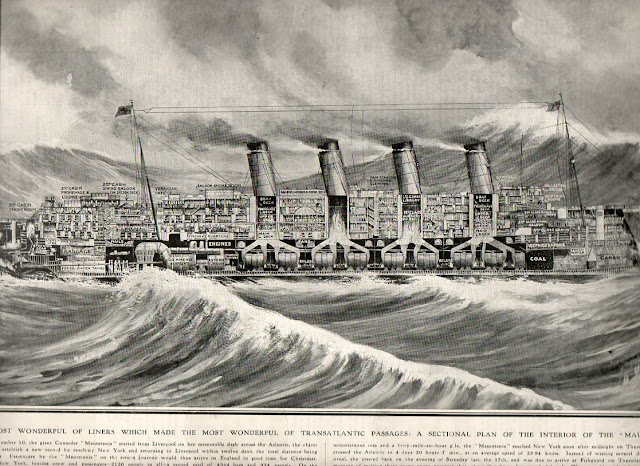
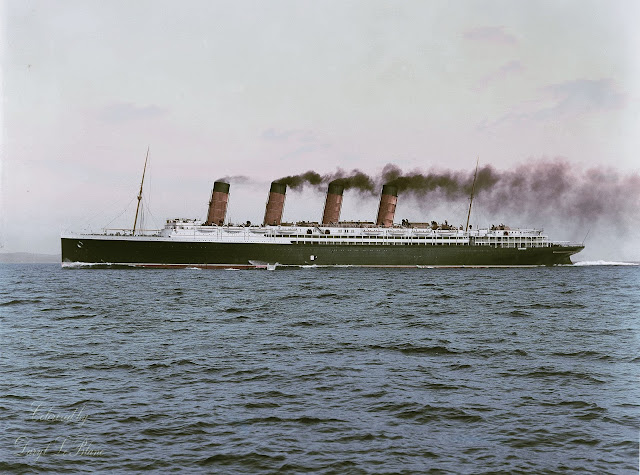
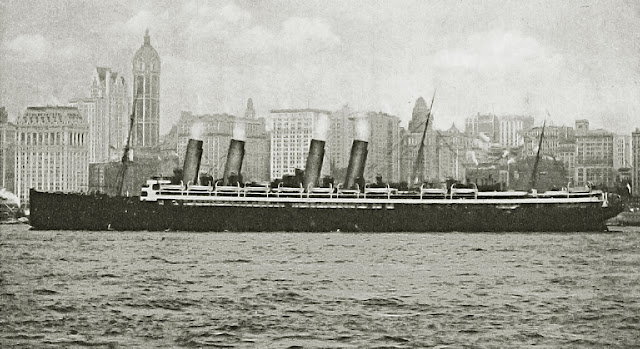
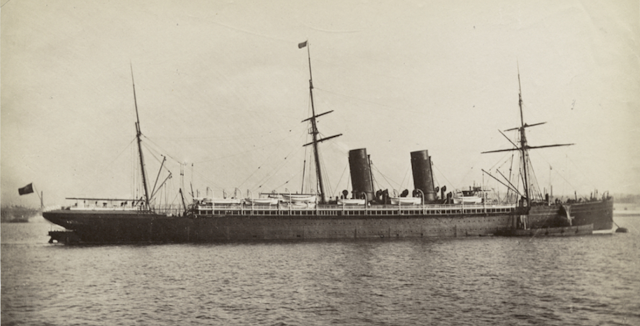
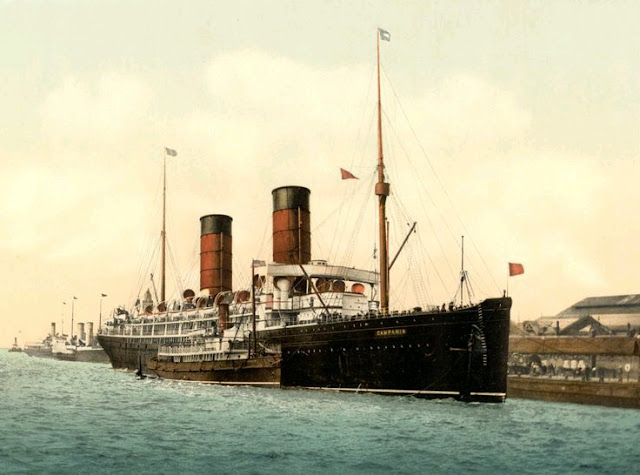
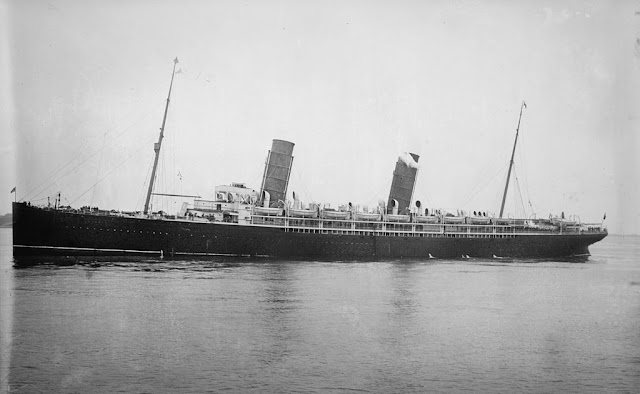
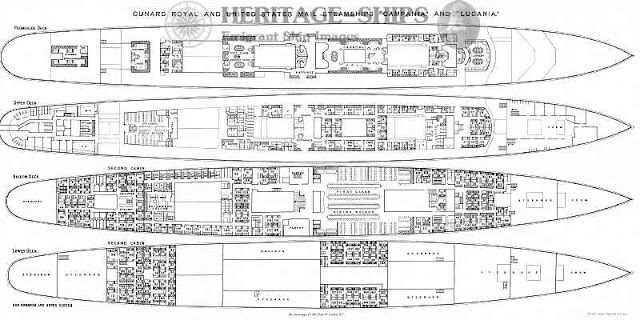

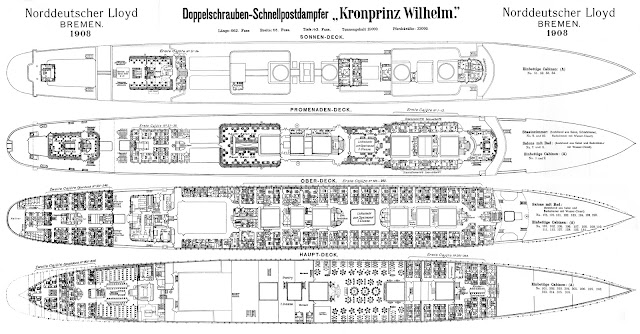

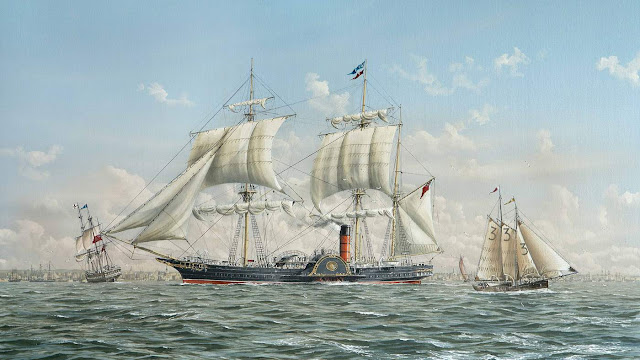
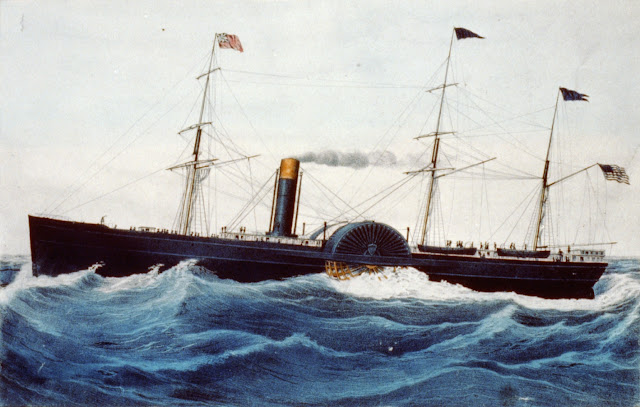
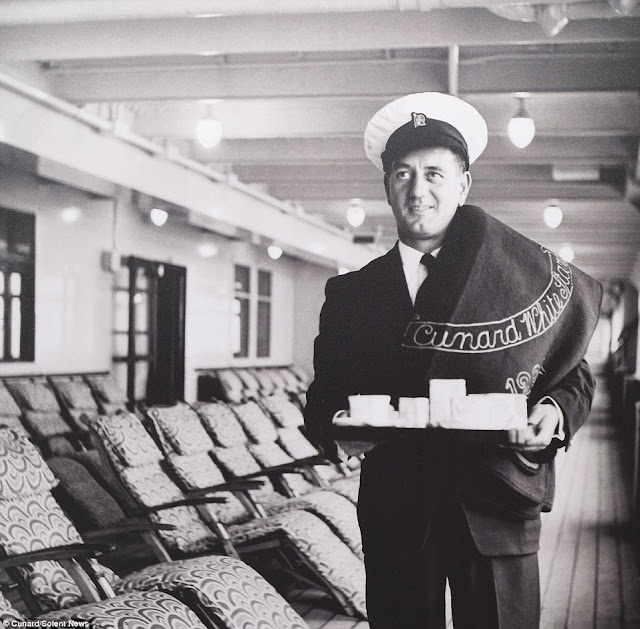

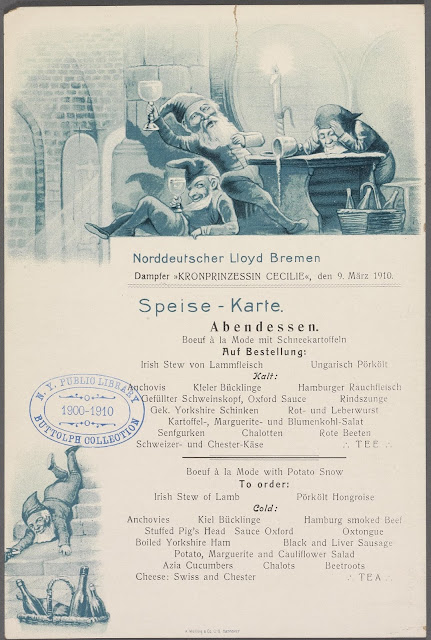

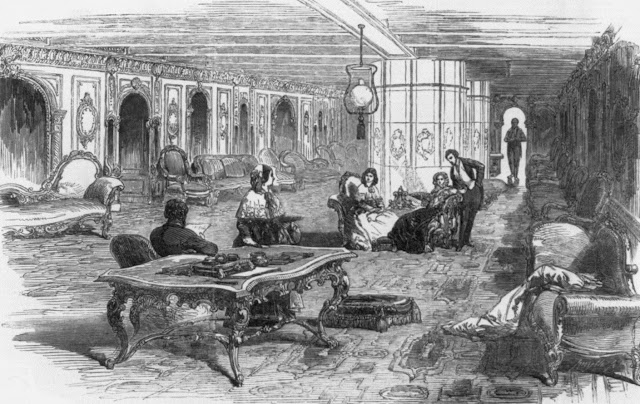

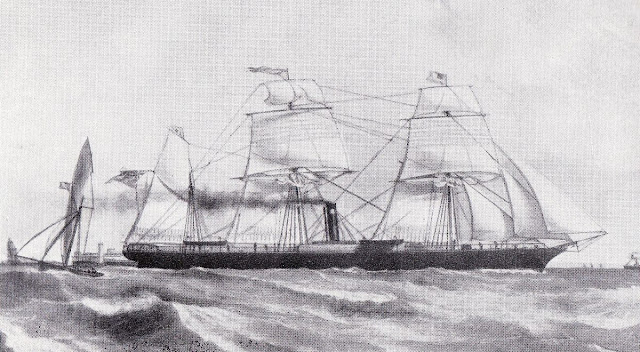
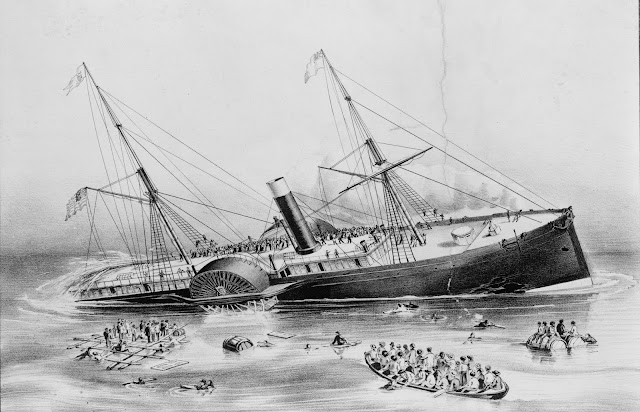
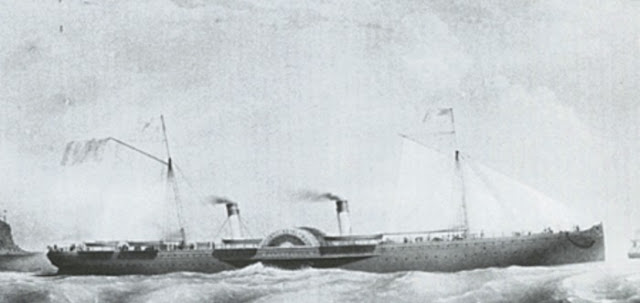
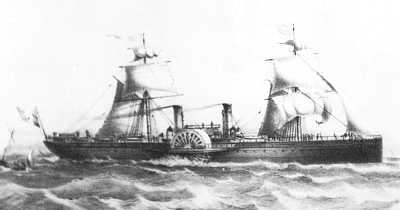
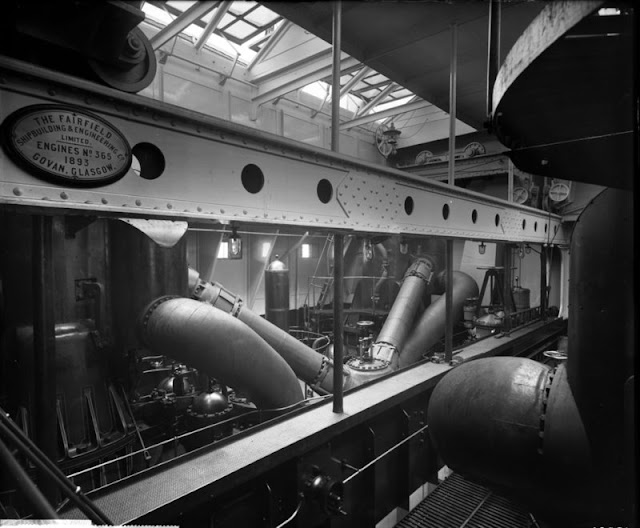
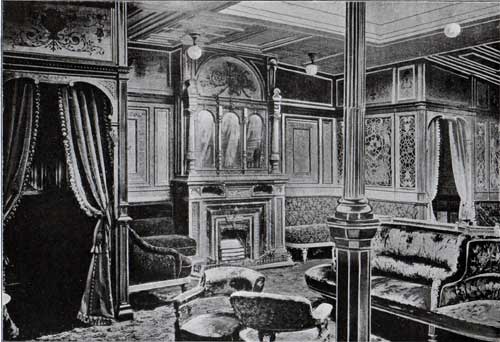
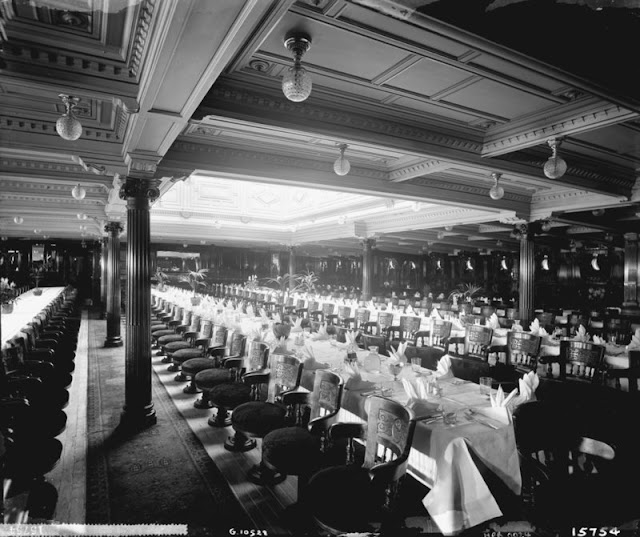
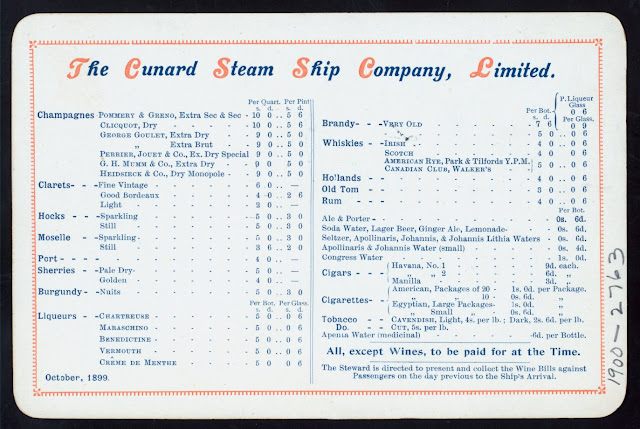
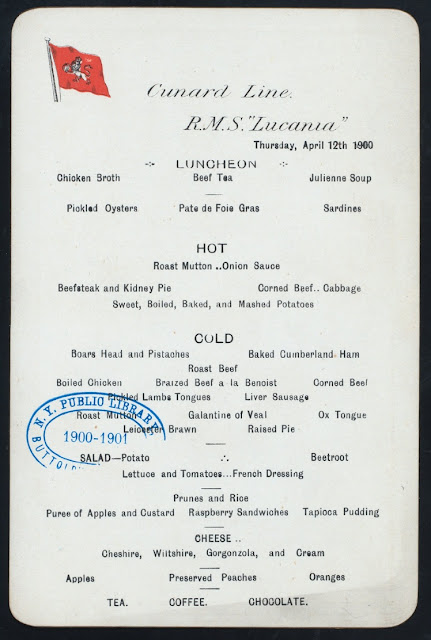



Comments
Post a Comment